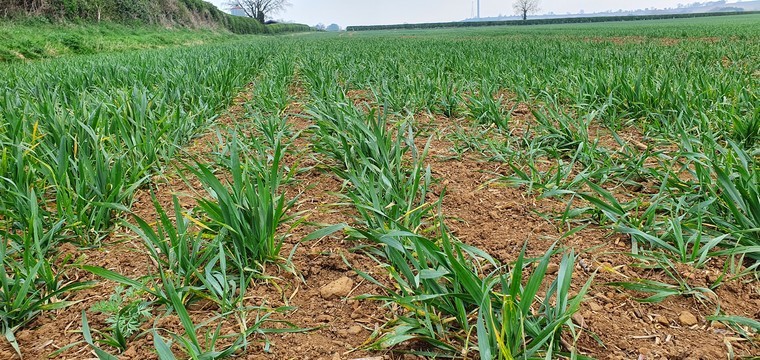Torrential winter rain led to a huge shift away from winter crops and delayed the important fieldwork that is traditionally carried out early in the year.
Where the region’s farmers have managed to apply the residual herbicides that traditionally suppress yield-robbing weeds, conditions have been far from ideal for maximum performance, and dry soils continue to hamper their efficacy.
Jess Barker, area manager for Corteva Agriscience in South East England, said: “Winter cereal crops are hugely varied. Many of the later drilled crops are going backwards, losing tillers and not benefiting from nitrogen applications due to the lack of rain. Earlier drilled crops are growing away and yellow rust is easy to find.
“Currently the weed pressure is low because soils are dry but many winter cereal crops are open and soil clods have now weathered down, so when the rain does come so will the weeds.”
After a prolonged period of dry weather, most arable farms have completed drilling spring cereals and are having to adapt to the dry conditions underfoot.
A common theme is a move away from residual chemistry in spring cereals particularly in non-blackgrass areas.
Jess says the reduction in the use of pendimethalin will increase the need for robust poppy control this spring particularly on the lighter soils across East Kent and Sussex.
“We have seen a low profile of weed germination over the past few weeks but the weed burden is still there in the soil,” she said.
“I expect the rain will bring a rapid flush of weeds and farmers will need to respond quickly to protect yields.”
Poppy is competitive in wheat, and a population of only 12 plants per square metre has the ability to reduce yields by 5% in winter wheat and can also be problematic in spring crops.
Along with poppy, cranesbill, speedwell and cleavers are among the common broadleaf weeds identified in spring and winter crops so far this season.
With herbicide applications already getting underway, Jess thinks farmers and their advisers will favour the Arylex Active family of chemistry because of its reliable control, wide window of application and wide tank mix compatibility.
“It’s an especially challenging condensed season but the unique features of Arylex will help farmers fit vitally important weed control into their schedule without compromising on performance,” Jess added.
Pixxaro and Zypar both contain Arylex Active and are contact-acting herbicides which can be applied all the way through to growth stage 45 in winter and spring cereals, but not oats. “Those growers who have clean fields at the moment have the option to use arylex at the T2 fungicide timing can mop up weeds that have escaped treatment earlier in the spring, as well as clearing out late flushes of cleavers and black bindweed which may come through.”
They deliver outstanding control of key problem weeds such as cleavers, poppies, cranesbill, fumitory, fat hen, chickweed and black bindweed as well as speedwell and pansy.
Timing is extremely flexible and Arylex chemistry has a wide range of tested tank-mix compatibilities with PGRs, fungicides and herbicides allowing farmers to make the most of limited spray opportunities and apply the tank mix of their choice.
Jess said: “Poppy for example should be targeted at up to 10cm across and before it produces a flower stem. Applications at the T1 fungicide timing provides the perfect opportunity add Arylex to your mix to remove competitive weeds early in a single pass.”
Gappy crops leave room for weeds




